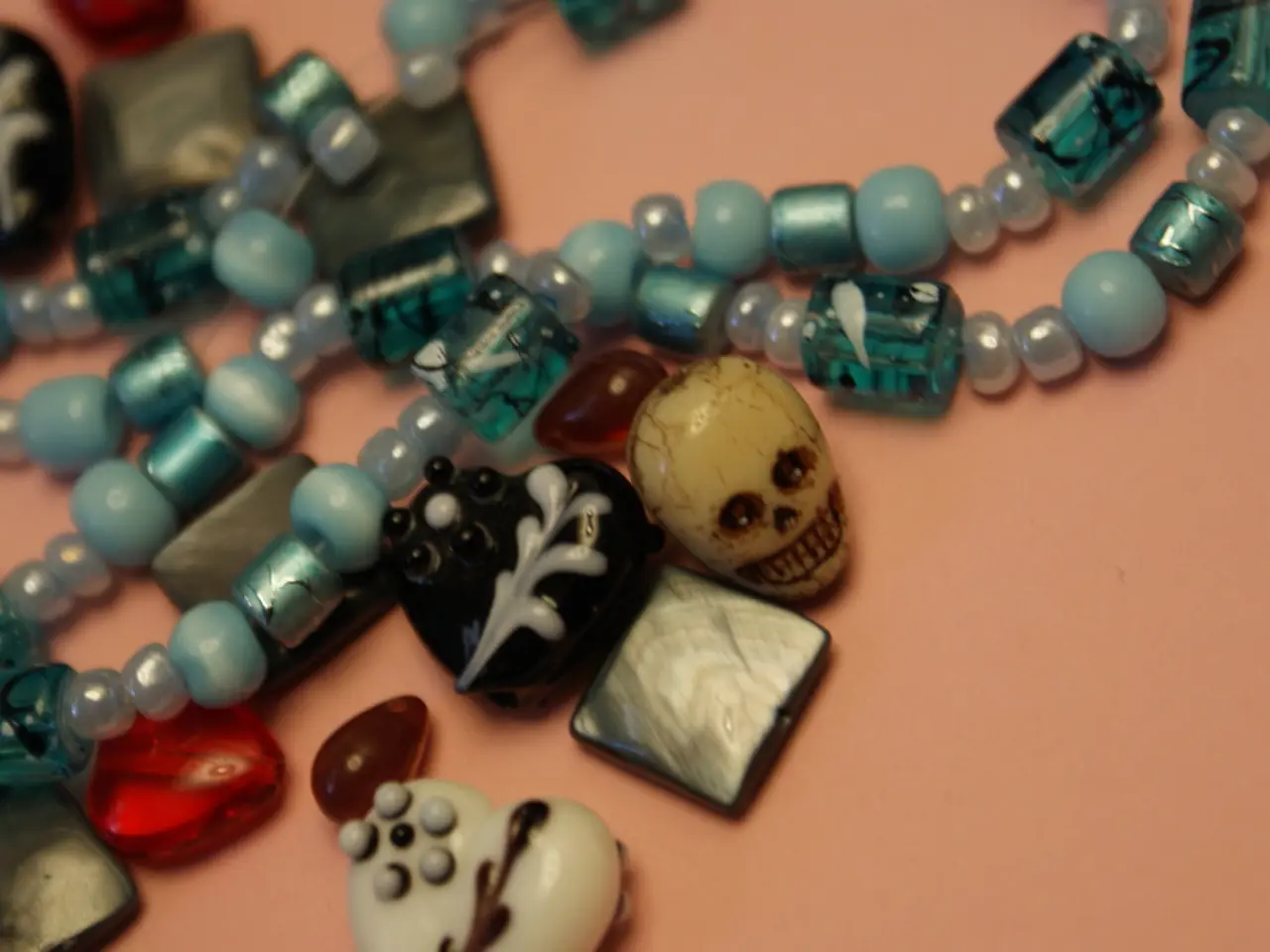Strategies for Setting Profitable Prices for Custom Jewelry Creations
Pricing Handmade Jewelry: A Comprehensive Guide
Crafting exquisite, handmade jewelry is a labor of love, but to ensure sustainability and profitability, it's essential to price your creations wisely. Here's a step-by-step guide to help you navigate the pricing process.
Step 1: Calculate your total costs
- Materials: Keep track of every component used for each piece, including packaging. Regularly review prices as they may fluctuate.
- Labor: Record the time spent on each item and multiply it by a fair hourly rate, usually around $20/hr, but reflecting your skill and market.
- Overhead: Include studio rent, electricity, tools, and other indirect costs. A common approach is adding about 10% of material and labor costs to cover overhead.
Step 2: Add a profit margin
After you know your cost basis, add a markup that ensures profitability and compensates for business risks. The markup varies by market, but it commonly ranges from 2x cost to higher, depending on exclusivity and demand.
Step 3: Factor in market considerations
- Research competitor prices and customer expectations in your niche.
- Adjust pricing for product complexity, customization, brand positioning, and sales channels (e.g., local boutique vs. online marketplace).
- Offer options like wholesale pricing or promotions cautiously to avoid eroding profit margins.
Step 4: Account for hidden and variable costs
- Allocate a percentage of revenue (5–10%) for marketing, promotions, and unexpected expenses to maintain profitability long-term.
- Review and adjust prices periodically as costs and market trends change.
Step 5: Use detailed quotes and transparency with customers
Provide itemized pricing to justify costs and build trust.
Step 6: Ongoing strategies to improve profitability
- Diversify product lines, improve production efficiency, strengthen online presence, and build customer loyalty to maintain a competitive edge and increase income.
In summary, the pricing formula is:
[ \text{Price} = ( \text{Material Cost} + \text{Labor Cost} + \text{Overhead} ) \times \text{Markup} + \text{Marketing/Buffer} ]
Adjust this price based on market research and customer feedback to remain competitive and profitable.
Conducting a thorough competitor price analysis is crucial for adjusting jewelry prices according to market trends. By following this guide, you'll be able to price your handmade jewelry effectively, ensuring you cover all costs, fairly compensate your time, remain flexible, and position your creations effectively in the marketplace.
As an entrepreneur in the handmade jewelry business, it's essential to understand personal-finance aspects, such as creating a pricing strategy that combines both cost calculation and profit margin considerations.
By applying both the materials cost, labor cost, and overhead to the markup, ensuring a reasonable profit margin in your finance, you can price your jewelry competitively while covering your expenses. Whilst keeping track of market trends through finance and competitor analysis, you can adjust your pricing accordingly to maintain profitability and position your products effectively in the business sphere.





